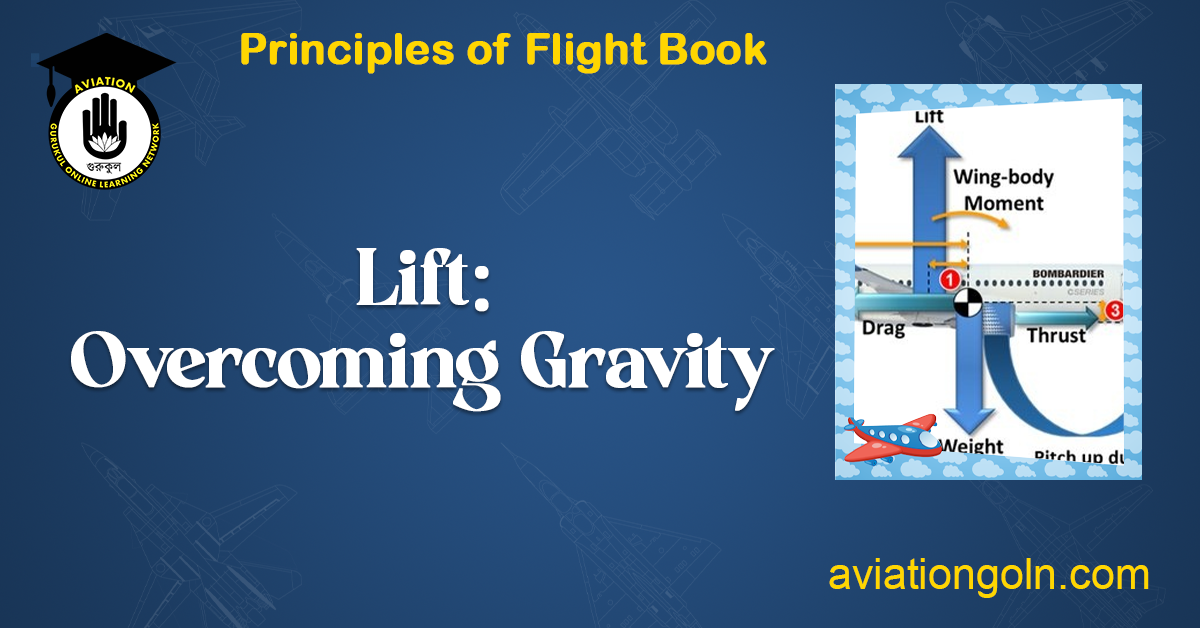When gazing at the vast expanse of the sky, the sight of birds effortlessly gliding or an airplane soaring high is a testament to the profound understanding and utilization of the principles governing flight. These principles aren’t just reserved for birds and planes; they apply to anything that flies, from the smallest insect to the largest jumbo jet. At the heart of these principles lie the four primary forces of flight: lift, gravity (or weight), thrust, and drag.

1. Understanding Gravity
Before delving into how objects overcome gravity, it’s vital to first understand gravity itself. Gravity is the force with which every mass or particle of matter, including photons, attracts every other mass or particle of matter. In everyday experiences, it’s the force that keeps us anchored to the Earth and is responsible for the Earth’s orbit around the Sun.
For aircraft, gravity represents a downward force that must be overcome. This downward force, often referred to as the weight of the aircraft, acts from the center of gravity of the object. The weight is always directed towards the center of the Earth and remains constant as long as the mass of the aircraft and the gravitational pull remain unchanged.
2. The Magic of Lift
The most vital force to counteract gravity in the context of flight is lift. Lift is the upward force that opposes the weight of an object and supports it in the air. It’s generated by the motion of the object through the air and the shape of its wings (or airfoils). For aircraft, the wings are specifically designed to produce lift.
The generation of lift can be best explained by Bernoulli’s principle and Newton’s third law of motion:
- Bernoulli’s Principle: As the speed of a fluid (like air) increases, its pressure decreases. Airplane wings are designed in a teardrop shape, called an airfoil. When air encounters this shape, it splits – with the top part traveling faster than the bottom. This means that there’s a higher pressure underneath the wing than on the top, leading to an upward pushing force: lift.
- Newton’s Third Law of Motion: Every action has an equal and opposite reaction. As the wing cuts through the air, it deflects air downwards. The opposite reaction to this downward movement of air is an upward force on the wing, contributing to lift.
It’s crucial to note that lift varies with the shape, size, and weight of the aircraft, the wing’s angle of attack (the angle between the wing’s chord line and the oncoming air), and the speed at which the aircraft moves through the air.
3. Propelling Forward with Thrust
While lift and gravity predominantly concern vertical movement, an aircraft also requires a forward motion to keep flying. This forward movement comes from thrust, generated primarily by engines or propellers.
Jet engines produce thrust through the expulsion of a high-speed jet of gas to the rear. In line with Newton’s third law, the forward reactionary force (thrust) propels the aircraft forward. Propellers, on the other hand, produce thrust by spinning and slicing through the air, pulling the aircraft forward.
The amount of thrust required depends on factors like the aircraft’s size, weight, and design, as well as the altitude and phase of flight.
4. The Hindrance of Drag
Every object moving through a fluid (which includes air) will experience resistance. This resistance, in aviation, is termed as drag. Just as thrust and lift counteract each other, so do drag and thrust.
There are multiple forms of drag, but two main types concern aviation:
- Parasitic Drag: This is the sum of all the drags that do not contribute to lift generation. It encompasses:
- Form Drag: Due to the shape of the object.
- Skin Friction: Arising from the air’s viscosity as it moves over the aircraft surface.
- Interference Drag: Occurs when various currents of air collide, creating vortices.
- Induced Drag: Related to the generation of lift. As the wing produces lift, it also causes tiny air vortexes to form at the wingtips. These vortexes cause a resistance to the forward motion of the aircraft, constituting the induced drag.
Efficient aircraft design aims to minimize drag while maximizing lift and thrust, ensuring an economic and smooth flight.
Balancing the Four Forces
For an aircraft to remain in steady, level flight, these forces must be in equilibrium:
- Lift must equal weight (gravity).
- Thrust must equal drag.
When an aircraft climbs, the lift momentarily exceeds weight, and when it descends, the weight exceeds lift. Similarly, to accelerate, the aircraft’s engines provide more thrust than the drag, and to slow down, thrust is reduced, and drag slows the plane.
Real-world Applications and Innovations
The principles of flight aren’t just static theories but have evolved with technological advancements:
- Supersonic Flight and Drag: As aircraft approach the speed of sound, they encounter a tremendous increase in drag called wave drag. Modern supersonic aircraft designs, like the Concorde, used a delta wing configuration to mitigate this.
- Variable Geometry Wings: Some military aircraft feature wings that can be swept back during flight. This feature provides the best of both worlds: a straight wing for better lift during takeoff and landing, and a swept-back wing for faster flight.
- Flaps and Slats: These are extendable parts of the wing that can change the wing’s shape and its angle of attack. They are typically extended during takeoff and landing to generate more lift at the slower speeds associated with these phases of flight.
Conclusion
The dance between gravity, lift, thrust, and drag is the core of aviation. Mastering the interplay of these forces allows us to achieve the age-old dream of human flight. From the Wright brothers’ first flight in 1903 to the advanced jets of today, our journey in the sky remains a testament to human innovation and our drive to explore the uncharted. The sky isn’t the limit; it’s just the beginning.
